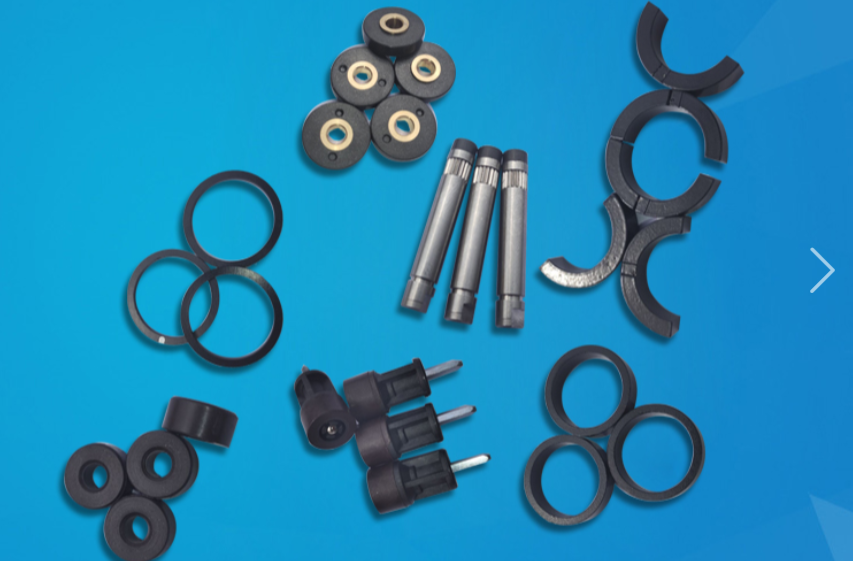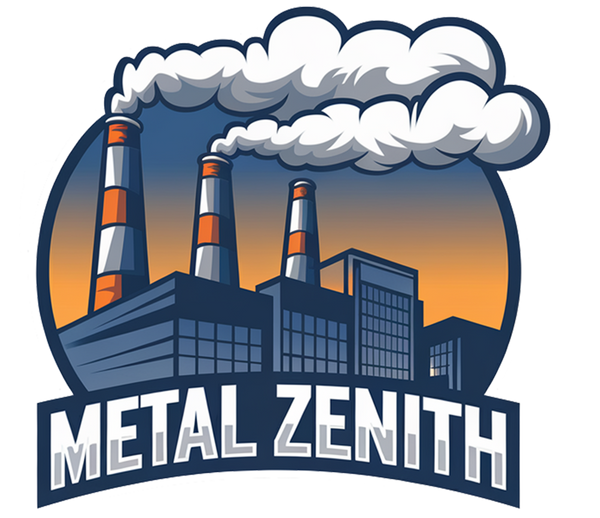
ما هي مغناطيسات NdFeb: دليل حقيقي في عام 2025
شارك
Table Of Content
Table Of Content
مغناطيس NdFeB هي أقوى المغناطيس الدائم الذي يمكنك شراؤه. إنها مصنوعة من مزيج من النيدميوم والحديد والبورون. تمتلك هذه المغناطيس خصائص مغناطيسية مذهلة. قوتها حوالي 10 مرات أعلى من المغناطيس الفيريت العادي. أنشأها الباحثون في جنرال موتورز وسوميتومو ميتالز الخاصة في عام 1982.
مغناطيس NdFeB يتكون أساسًا من الحديد. كما تحتوي على حوالي 31-32٪ من النيدميوم و1٪ من البورون. تأتي قوتها من هيكلها البلوري. هذا الهيكل يجعل المغناطيس قويًا جدًا في اتجاه واحد. يمكن لمغناطيس NdFeB إنشاء مجالات مغناطيسية تصل إلى 1.4 تسلا على سطحه.
تمتلك هذه المغناطيس العديد من الميزات الأساسية التي تجعلها مفيدة:
- ممانعة عالية (Br) تبلغ 1.0-1.4 T
- قوة قهر قوية (Hc) تبلغ 750-2000 كا/م
- منتج طاقة عالي (BHmax) يبلغ 200-440 كج/م3
- مقاومة للصدأ عند طليها
- تكلفتها أقل من بعض المغناطيسات القوية الأخرى
تسمح هذه الخصائص المغناطيسية الرائعة بالعديد من الاستخدامات لمغناطيس NdFeB. إنها تعمل بشكل جيد عندما تحتاج إلى مجال مغناطيسي قوي في مساحة صغيرة. يستخدمها الأشخاص في المحركات الكهربائية والمولدات والعديد من الأجهزة الإلكترونية.
الخصائص الرئيسية لمغناطيس NdFeB

تمتلك مغناطيس NdFeB عدة خصائص مهمة. قوتها المغناطيسية استثنائية، مع ممانعة (Br) تتراوح بين 1.0-1.4 T، مما يعني أنها يمكن أن تنتج مجالات مغناطيسية قوية جداً. كما أن لمغناطيس NdFeB قوة قهر عالية (Hc) تبلغ 750-2000 كا/م. وهذا يسمح لها بمقاومة إزالة المغناطيسية.
حساسية الحرارة هي اعتبار رئيسي لمغناطيس NdFeB. لديهم درجة حرارة كوري منخفضة نسبياً تبلغ حوالي 310-400°C، وعند درجات حرارة أعلى، تبدأ خصائصهم المغناطيسية في الت degrade. درجة الحرارة القصوى للتشغيل لمغناطيس NdFeB القياسي هي حوالي 80°C. يمكن أن تعمل الفئات الخاصة ذات درجات الحرارة العالية حتى 200°C.
التآكل هو عامل مهم آخر. تحتوي مغناطيس NdFeB على الحديد ويمكن أن تصدأ إذا تُركت بدون حماية، لذلك فإن الطلاءات المناسبة مثل الطلاء بالنحاس ضرورية لمقاومة التآكل. مع طلاء واقٍ، يمكن لمغناطيس NdFeB أن تستمر لسنوات عديدة في معظم البيئات.
مغناطيس NdFeB هشة جداً ويمكن أن تتشقق أو تتصدع إذا تم التعامل معها بشكل خشن. كثافتها حوالي 7.4-7.7 غم/سم3، ولديها قوة وصلابة معتدلة مقارنة بأنواع المغناطيس الأخرى.
إليك مقارنة للخصائص الرئيسية لمواد المغناطيس الشائعة:
| الخاصية | NdFeB | SmCo | فيريت | AlNiCo |
|---|---|---|---|---|
| Br (T) | 1.0-1.4 | 0.8-1.1 | 0.2-0.4 | 0.6-1.3 |
| Hc (كأ / م) | 750-2000 | 600-2000 | 120-300 | 40-160 |
| BHmax (كج / م3) | 200-440 | 120-240 | 10-40 | 10-88 |
| Tmax (°C) | 80-200 | 250-350 | 250-300 | 450-550 |
تظهر هذه البيانات النقاط القوية لمغناطيس NdFeB. كما تكشف عن حدود درجات حرارتها مقارنة بالمغناطيسات الأخرى. يساعد فهم هذه الخصائص الرئيسية في اختيار واستخدام مغناطيس NdFeB بشكل صحيح.
عملية تصنيع مغناطيس NdFeB

تصنع مغناطيس NdFeB بطريقتين رئيسيتين. النوع الأكثر شيوعًا والأقوى هو المغناطيس المنصهر. تبدأ عملية الانصهار من خلال ذوبان وصب المواد الخام في سبيكة. ثم تُطحن هذه السبيكة إلى مسحوق ناعم. يتم ضغط المسحوق في مجال مغناطيسي لمحاذاة الجسيمات. أخيرًا، يدمج الحرارة العالية الجسيمات معًا.
تستخدم مغناطيس NdFeB الملصقة طريقة مختلفة. يتم خلط المسحوق المغناطيسي مع رابط بوليمري لتشكيل مزيج. يمكن تشكيل هذا المزيج أو ضغطه في أشكال مختلفة. تسمح المغناطيس الملصقة بميزات تصميم أكثر ولكنها ليست قوية مثل الأنواع المنصهرة.
تستخدم درجات مغناطيس NdFeB أحرفًا وأرقامًا. N42 تعني مغناطيسًا منصهرًا بطاقته 42 MGOe. تشير الأرقام الأعلى إلى مغناطيسات أقوى. تشير الأحرف مثل M وH أو SH إلى تحمل أفضل للحرارة.
| الدرجة | منتج الطاقة الأقصى (MGOe) | درجة حرارة التشغيل القصوى (°C) |
|---|---|---|
| N35 | 33-36 | 80 |
| N42 | 40-43 | 80 |
| N52 | 50-53 | 80 |
| N42M | 40-43 | 100 |
| N35H | 33-36 | 120 |
| N35SH | 33-36 | 150 |
تعتبر الطلاءات حيوية لمغناطيس NdFeB. الطلاءات الشائعة هي النيكل والزنك والإيبوكسي. تحمي هذه الطلاءات من الصدأ وتجعل المغناطيسات تدوم لفترة أطول. غالبًا ما تستخدم طرق مثل الطلاء الكهربائي أو ترسيب البخار في الطلاء.
التحقق من الجودة أمر أساسي في صنع مغناطيس NdFeB. يستخدم المصنعون العديد من الاختبارات لضمان الخصائص المغناطيسية الجيدة والحجم الصحيح. تشمل هذه الاختبارات قياس التدفق المغناطيسي، واختبار قوة السحب، والتحقق من الأبعاد بعناية.
تطبيقات مغناطيس NdFeB

غيرت مغناطيس NdFeB العديد من الصناعات. قوتها المغناطيسية القوية تجعلها مفيدة جدًا. تُستخدم كثيرًا في المحركات الكهربائية والمولدات. تساعد هذه المغناطيسات في جعل المحركات أصغر وتعمل بشكل أفضل.
تعتبر مغناطيس NdFeB أجزاء أساسية في محركات المركبات الكهربائية. تستخدم موتور EV العادية حوالي 1-2 كجم من هذه المغناطيسات. كما تستخدم العديد من الأجهزة الإلكترونية مغناطيس NdFeB. فهي موجودة في مكبرات الصوت، وسماعات الرأس، ومحركات الاهتزاز في الهواتف.
تحتاج محركات الأقراص الصلبة إلى مغناطيس NdFeB للعمل. تساعد المغناطيسات في موضع رأس قراءة القرص بدقة كبيرة. تُستخدم مغناطيس NdFeB أيضًا بطرق صناعية عديدة. تساعد في فصل المواد لإعادة التدوير ومعالجة المعادن.
تستخدم المغناطيسات القوية للرفع مغناطيس NdFeB لرفع الأشياء المعدنية الثقيلة. تحتوي توربينات الرياح غالبًا على مغناطيسات NdFeB كبيرة في مولداتها. تساعد هذه المغناطيسات في توليد المزيد من الطاقة.
مغناطيس NdFeB مهم في بعض الأجهزة الطبية. تستخدم آلات التصوير بالرنين المغناطيسي المغناطيسات لصنع مجالات مغناطيسية قوية للتصوير. بعض زراعة الأسنان والأجهزة العظمية تستخدم أيضًا هذه المغناطيسات.
يبحث الباحثون عن طرق جديدة لاستخدام مغناطيس NdFeB في الطب. أحد الأفكار هو توجيه الأدوية في الجسم باستخدام المغناطيسات. إليك جدول يوضح أين تُستخدم مغناطيس NdFeB:
| الصناعة | التطبيقات |
|---|---|
| السيارات | محركات كهربائية، مستشعرات، مكبرات صوت |
| الإلكترونيات | محركات الأقراص الصلبة، مكبرات الصوت، محركات الاهتزاز |
| الصناعية | الفصل، الرفع، المحركات، المولدات |
| الطبية | آلات التصوير بالرنين المغناطيسي، الزرعات، العلاجات التجريبية |
| الطاقة | مولدات توربينات الرياح، مولدات الطاقة الكهرومائية |
| الفضاء | محركات، مستشعرات، محركات |
تساعد مغناطيس NdFeB في خلق أشياء جديدة في العديد من المجالات. إنها قوية وليست باهظة الثمن، مما يجعلها مفيدة جدًا. مع اكتشاف استخدامات جديدة، من المحتمل أن تكون هناك حاجة إلى المزيد من هذه المغناطيسات القوية.
المزايا والعيوب لمغناطيس NdFeB
تمتلك مغناطيس NdFeB العديد من الفوائد. تجعل قوتها المغناطيسية القوية التصميمات أصغر في العديد من الأجهزة. لذا فهي مثالية للأدوات والأجهزة الصغيرة. مغناطيس NdFeB أيضًا أرخص من مغناطيسات الأرض النادرة الأخرى.
ومع ذلك، تمتلك هذه المغناطيسات بعض العيوب. إنها حساسة للحرارة. الأنواع العادية تفقد قوتها فوق 80°C. يمكن أن تعمل الأنواع الخاصة حتى 200°C، لكنها تكلف أكثر. هذا يحد من الأماكن التي يمكن استخدامها فيها.
تعتبر الصدأ مشكلة أخرى لمغناطيس NdFeB. تحتاج إلى طلاءات خاصة لتجنب الضرر. بدون حماية، يمكن أن تتعطل بسرعة في الأماكن الرطبة أو القاسية. هذا يزيد من تكلفة وتعقيد صنعها.
تعتبر مغناطيس NdFeB أكثر صلابة وأقل هشاشة من بعض الأنواع الأخرى. ولكنها لا تزال قد تتشقق أو تتصدع إذا لم يتم التعامل معها بحذر. يجب على المستخدمين أن يكونوا لطيفين عند التعامل مع هذه المغناطيسات.
يوضح الجدول أدناه المزايا والعيوب الرئيسية:
| المزايا | العيوب |
|---|---|
| قوة مغناطيسية عالية | حساسة للحرارة |
| حجم مضغوط | عرضة للتآكل |
| تكلفة منخفضة نسبيًا | طبيعة هشة |
| مقاومة جيدة لإزالة المغناطيسية | أداء محدود في درجات الحرارة العالية |
اختيار مغناطيس NdFeB يعني التفكير في كل هذه العوامل. غالبًا ما تعمل بشكل أفضل عندما تكون الحجم والقوة هما الأهم. قد تكون أنواع المغناطيس الأخرى أفضل للمناطق الساخنة أو القاسية. يجب على المهندسين التفكير ملياً في الأماكن التي ستستخدم فيها المغناطيسات.
تسعى الأبحاث الجديدة إلى حل بعض هذه المشاكل. يعمل العلماء على إنشاء خلطات جديدة للمساعدة في تحسين أداء المغناطيسات في الحرارة. تجعل الطلاءات الأفضل المغناطيسات أقل احتمالية للصدأ. تساعد هذه التغييرات مغناطيس NdFeB لتكون مفيدة في أماكن أكثر.
اعتبارات بيئية واقتصادية
لإنتاج واستخدام مغناطيس NdFeB تأثيرات كبيرة. تصنع الصين أكثر من 80٪ من النيدميوم في العالم، مما يثير القلق بشأن سلاسل التوريد والجغرافيا السياسية للصناعات التي تحتاج إلى هذه المغناطيسات.
يمكن أن تؤذي التعدين للمعادن النادرة البيئة. غالبًا ما تشمل العملية استخدام مواد كيميائية سامة وتوليد نفايات مشعة، على الرغم من أن الجهود لتحسين ممارسات التعدين جارية.
تعتبر إعادة تدوير مغناطيس NdFeB أمرًا حيويًا. حاليًا، يتم إعادة تدوير أقل من 1٪ من العناصر الأرضية النادرة، ولكن تظهر تقنيات جديدة لاسترداد النيدميوم من المنتجات القديمة.
سوق مغناطيس NdFeB ينمو بسرعة. يزداد الطلب نتيجة للطاقة المتجددة والمركبات الكهربائية، حيث تم تقدير السوق العالمي بـ 12.5 مليار دولار في عام 2020.
| السنة | قيمة سوق NdFeB العالمية |
|---|---|
| 2020 | 12.5 مليار دولار |
| 2025 | 17.5 مليار دولار (متوقع) |
تسبب تغييرات الأسعار قلقًا للصناعات التي تستخدم مغناطيس NdFeB. يمكن أن تتقلب أسعار النيدميوم كثيرًا بناءً على العرض والطلب، مما يؤثر على تكلفة التقنيات التي تستخدم هذه المغناطيسات.
تجري الأبحاث على مواد مغناطيسية أخرى. يسعى العلماء لتقليل الاعتماد على العناصر الأرضية النادرة من خلال استكشاف البدائل مثل نيتريد الحديد ومغناطيسات النيدميوم الحديد.
توازن النمو والاستدامة هو تحدي رئيسي. مع زيادة الطلب على مغناطيس NdFeB، سيكون من الضروري معالجة القضايا البيئية والاقتصادية من أجل مستقبل الصناعة.
التعامل والسلامة
تحتاج مغناطيس NdFeB إلى تعامل حذر. يمكن أن تسبب مجالاتها المغناطيسية القوية إصابات من خلال جذب بعضها بشدة. احرص على إبقاء الأصابع بعيدة عند تقريب المغناطيسات من بعضها. يجب التعامل مع مغناطيسات NdFeB الكبيرة بعناية شديدة.
تعتبر هذه المغناطيسات هشة. يمكن أن تتكسر إلى قطع حادة إذا تم صدمها. ارتدِ نظارات الأمان عند العمل بها. غبار NdFeB قابل للاشتعال وسام.
يمكن أن تفسد مجالات المغناطيس الأجهزة الإلكترونية. احرص على إبقاء المغناطيس بعيدًا عن الكمبيوترات والهواتف. يجب على الأشخاص الذين لديهم أجهزة تنظيم ضربات القلب تجنب المغناطيسات القوية من نوع NdFeB. يمكن أن تتداخل المجالات مع هذه الأجهزة الطبية.
| إجراء سلامة | السبب |
|---|---|
| ارتدِ نظارات الأمان | لحماية العيون من الشظايا المحتملة |
| احفظ الأصابع بعيدة | لتجنب إصابات الضغط |
| تجنب استنشاق الغبار | للوقاية من التعرض السام |
| أبقي بعيدًا عن الإلكترونيات | لتجنب التداخل |
يعتبر التخزين السليم أمرًا أساسيًا. استخدم فواصل غير مغناطيسية بين المغناطيسات. قم بتخزينها في مكان بارد وجاف لمنع الصدأ. عند الشحن، استخدم تعبئة قوية مع ملصقات تحذيرية واضحة.
لا ينبغي للأطفال اللعب بهذه المغناطيسات. إذا تم ابتلاعها، يمكن أن تسبب إصابات داخلية خطيرة. ابقِ مغناطيسات NdFeB الصغيرة بعيدة عن أيدي الأطفال والحيوانات الأليفة.
تساعد اتباع هذه الإرشادات في تقليل المخاطر. مغناطيس NdFeB مفيدة بعدة طرق. لكن يجب احترام مخاطرها المحتملة.
الخاتمة والتطورات المستقبلية
غيرت مغناطيس NdFeB العديد من الصناعات منذ اكتشافها في الثمانينات. إن قوتها المغناطيسية القوية تسمح بوجود أجهزة أصغر وأكثر كفاءة في مجالات متعددة. تعتبر هذه المغناطيسات أساسية في التكنولوجيا الحديثة، من السيارات الكهربائية إلى توربينات الرياح. ومع ذلك، لا تزال تواجه مشاكل تتعلق بالحرارة والصدأ.
تستمر الأبحاث لتحسين مغناطيس NdFeB. يعمل العلماء على خلطات جديدة لزيادة درجات الحرارة القصوى للعمل. يهدفون إلى تقليل استخدام الديسبروسيوم مع الحفاظ على قوة المغناطيسات. قد يؤدي هذا إلى مغناطيسات أرخص وأكثر صداقة للبيئة في المستقبل. كما يتم تطوير طلاءات جديدة لمحاربة الصدأ.
تمتلك مغناطيس NdFeB مستقبلًا مشرقًا. يعتقد الخبراء أن السوق سوف ينمو بشكل كبير في السنوات المقبلة. قد يصل سوق مغناطيس NdFeB العالمي إلى 20 مليار دولار بحلول عام 2026. ويرجع هذا النمو أساسًا إلى زيادة الطلب في الطاقة الخضراء والمركبات الكهربائية.
| السنة | قيمة سوق NdFeB العالمي المتوقع |
|---|---|
| 2021 | 13.5 مليار دولار |
| 2026 | 20 مليار دولار |
تتبين بسرعة طرق جديدة لإعادة تدوير مغناطيس NdFeB. يمكن لبعض الوسائل الآن استرداد حتى 90٪ من العناصر الأرضية النادرة من المنتجات القديمة. هذا قد يقلل بشكل كبير من الأثر البيئي الناتج عن صنع المغناطيس. كما أنه قد يساعد في تخفيف القلق بشأن الحصول على كميات كافية من العناصر الأرضية النادرة.
مع تطور التكنولوجيا، يجد الناس استخدامات جديدة لمغناطيس NdFeB. قد تستخدم في الحواسيب الكمومية وأدوات طبية جديدة. قد تغير المغناطيسات الأصغر والأقوى مجالات مثل النانوتكنولوجيا والروبوتات.
لتلخيص، لا تزال مغناطيس NdFeB المواد المغناطيسية الرائدة. إنها تدفع الأفكار الجديدة في العديد من الصناعات. على الرغم من وجود مشاكل مستمرة، فإن الأبحاث الجارية تعد بجعلها أكثر فائدة في المستقبل.
